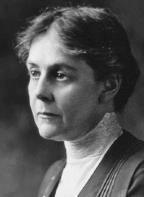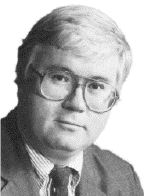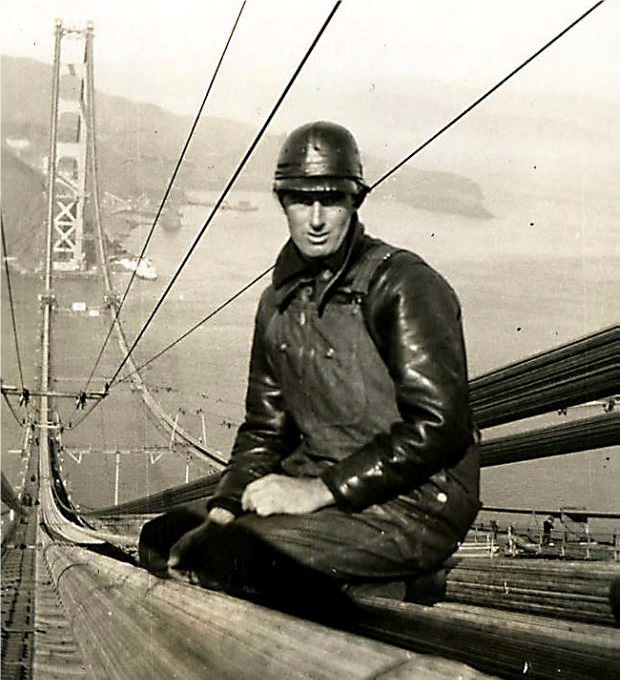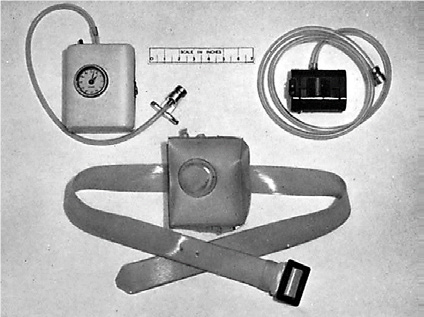Recognizing Exemplary Science and Service
Posted on by
Exemplary science is the foundation for all National Institute for Occupational Safety and Health (NIOSH) research and prevention activities. Each year, NIOSH recognizes outstanding science and service from our employees. This year’s Science and Service Awards took place on April 29, 2021. The nominees, awardees, and honorable mentions can be found here. Please visit the link to learn more about the important science. While the awardees deserve praise and accolades, in honor of the NIOSH 50th anniversary, this blog highlights the awards themselves and the trail blazers who inspired many of the awards.
Alice B. Hamilton Awards for Occupational Safety and Health
In the 1988, NIOSH created The Alice Hamilton Award as a single award to acknowledge the best published paper of the year from a NIOSH scientist. The award honored Dr. Alice Hamilton (1869–1970), a pioneering researcher and occupational physician. Realizing that it was difficult to limit the wide range of NIOSH research to one type of project or paper, multiple categories were created evolving over time to the eight categories we have today: Behavioral and Social Science, Communication and Guidance, Engineering and Control, Epidemiology and Surveillance, Exposure and Risk Assessment, Methods and Laboratory Science, Research Service, and, new for 2021, COVID-19 Communication and COVID-19 Research. The awards are based on rigorous reviews by panels of scientific experts from outside of NIOSH. A list of past winners can be found here.
Alice Hamilton
 Many early laws to improve workers’ health derived from the work of Alice Hamilton, MD. Born into a prominent Indiana family (her sister was the well-known classicist, Edith Hamilton), Dr. Hamilton graduated from the University of Michigan Medical School in 1893. After joining the Women’s Medical School of Northwestern University in 1897, she moved into Jane Addams’ Hull House in Chicago and opened a well-baby clinic for poor families in the neighborhood. There, she began to study the underlying social problems related to the pain experienced by the families she treated such as lead palsy or “wrist drop,” “strange” deaths and the high numbers of widowed women. She applied her medical knowledge to these social problems and thus began her scientific inquiry into occupational health for which she became known.
Many early laws to improve workers’ health derived from the work of Alice Hamilton, MD. Born into a prominent Indiana family (her sister was the well-known classicist, Edith Hamilton), Dr. Hamilton graduated from the University of Michigan Medical School in 1893. After joining the Women’s Medical School of Northwestern University in 1897, she moved into Jane Addams’ Hull House in Chicago and opened a well-baby clinic for poor families in the neighborhood. There, she began to study the underlying social problems related to the pain experienced by the families she treated such as lead palsy or “wrist drop,” “strange” deaths and the high numbers of widowed women. She applied her medical knowledge to these social problems and thus began her scientific inquiry into occupational health for which she became known.
In 1908, Dr. Hamilton published one of the first articles on occupational health in the United States. Two years later, she began exploring occupational toxic disorders. Relying primarily on “shoe leather epidemiology,” and the emerging science of toxicology, she pioneered occupational epidemiology and industrial hygiene in the United States. Her scientifically persuasive findings caused sweeping reforms to improve the health of workers.
In 1919, Dr. Hamilton became assistant professor of industrial medicine at Harvard Medical School and the school’s first female faculty member. While there, she served two terms on the Health Committee of the League of Nations. Upon retiring from Harvard at age 66, she became a consultant to the U.S. Division of Labor Standards and president of the National Consumers League.
On February 27, 1987, NIOSH dedicated the Alice Hamilton Laboratory for Occupational Safety and Health, in Cincinnati, Ohio in her honor.
James P. Keogh Award for Outstanding Service in Occupational Safety and Health
Recipients of the Keogh Award for Outstanding Service in Occupational Safety and Health
2021: Maryann D’Alessandro
2020: Christopher Coffey
2019: Leslie Nickels
2018: Pete Kovalchik
2017: Diane Porter
2016: Thomas R. Waters
2015: Kathleen Kreiss
2014: Albert E. Munson
2013: Michael Attfield
2012: Alice Suter
2011: Linda Rosenstock
2010: James W. Collins
2009: John Howard
2008: Mitch Singal
2007: Steven Sauter
2006: Marilyn Fingerhut
2005: Rosemary Sokas
2004: Dawn Castillo
2003: James A. Merchant
2002: Philip J. Landrigan
2001: William Edward Halperin
2000: Richard A. Lemen
 This award recognizes a current or former NIOSH employee for exceptional service in the field of occupational safety and health. This award honors the contributions made by public health workers who fight long odds to achieve safer and healthier workplaces. James P. Keogh, M.D., worked throughout his life for peace and social change. He sought to safeguard workers through education about hazards, and he advocated workplace protections.
This award recognizes a current or former NIOSH employee for exceptional service in the field of occupational safety and health. This award honors the contributions made by public health workers who fight long odds to achieve safer and healthier workplaces. James P. Keogh, M.D., worked throughout his life for peace and social change. He sought to safeguard workers through education about hazards, and he advocated workplace protections.
Dr. Keogh was a tireless advocate for worker safety and health who died in June 1999 at the age of 49. His earliest work in academic medicine identified dimethylaminopropionitrile as the causal agent in an outbreak of bladder neuropathy in the 1970s. Dr. Keogh was able to make this determination because, unlike many of the clinicians initially contacted by the workers, he took their complaints seriously and applied clear public health principles to his investigation. Throughout his life, he listened carefully to workers, characterized hazards and diseases, and then fearlessly worked to identify compensation for the individual and prevention strategies for others.
Dr. Keogh was instrumental in the inclusion of construction workers in the Maryland Occupational Safety and Health lead standard, a full decade before the Federal standard did the same. He was a leading medical educator who always focused on the need to incorporate clinical compassion with public health prevention. His most outstanding legacy, however, was his fierce determination to put knowledge into practice to benefit the worker.
Bullard-Sherwood Research to Practice Award

This award recognizes outstanding efforts by NIOSH scientists and their partners in applying occupational safety and health research to prevent work-related injury, illness, and death. These awards highlight efforts that demonstrate noteworthy impact through partnerships. The award is named in honor of two distinguished inventers who made significant improvements in workplace injury and illness prevention.
Edward W. Bullard designed the first “hard hat” as protective headgear for miners with his “Hard Boiled Hat,” so-called due to the steam used to harden it during manufacturing. Later, he adapted his helmet to protect workers building the Golden Gate Bridge from falling rivets, leading to the bridge site becoming the first designated “Hard Hat Construction Area.” Mr. Bullard also designed and sold another helmet specifically to protect sandblasting workers at the bridge site. Similar to the Hard Boiled Hat, this helmet included a hood, or “canopy,” a see-through window, and an air supply. The helmets helped to prevent death and injury during the project and in the years since. Even so, 11 workers died at the bridge site—including 10 in 1937 when a scaffold collapsed. Today, about 6 million hard hats are sold annually throughout the world. Mr. Bullard’s family-owned company still produces many of those hard hats, as well as modern sandblasting helmets.

Plain Language Award
The Plain Writing Act of 2010 requires that federal agencies provide clear communication that the public can understand and use. NIOSH encourages plain language in all of its communication products. The Plain Language Award, established in 2017, recognizes NIOSH fact sheets, brochures, infographics, and web topic pages that demonstrate excellence in applying plain language principles. Awards are given in two categories. The Before and After Award recognizes a revised NIOSH-branded product that includes both an original, difficult to read version and the revised version that uses plain language principles. The Original Award recognizes a NIOSH-branded product originally created using plain language principles.
Service Excellence Award
These awards focus on both the management and operations side of the Institute and recognize NIOSH staff who provide excellent administrative and managerial support to the Institute’s mission and projects. The awards recognize distinction in four categories: Excellence in Administration, Excellence in Leadership, and Excellence in Workforce Development.
Director’s Intramural Award for Extraordinary Science
This award recognizes the outstanding contributions and dedication of NIOSH staff to science excellence. The award honors experienced scientists, early career scientists, and scientific support staff whose collective body of work has resulted in significant contributions to the NIOSH mission.
The Lew Wade Distinguished Career Scientist Award
This award recognizes a permanent employee or fellow who has made extraordinary scientific contributions to their field of work. Dr. Wade was a life-long civil servant who spent his career in safety research. He joined NIOSH in 2000 as the associate director of the Office of Mine Safety and Health Research and went on to serve as NIOSH’s senior science advisor, helping to guide critical research and service programs. He was instrumental in guiding NIOSH as it worked to create a new program established by the Energy Employees Occupational Illness Compensation Program Act and its Advisory Board on Radiation and Worker Health. After his retirement in 2008, Dr. Wade continued to provide counsel to NIOSH’s World Trade Center Health Program and its staff until his passing in 2018. Dr. Wade was the embodiment of a distinguished career scientist.
The Early Career Scientist Award
This award recognizes the outstanding contributions of a promising NIOSH researcher in the beginning of their career. The award is given to a permanent employee or fellow who has received a masters or doctorate degree in a scientific discipline in the past five years.
The Scientific Support Award
This award recognizes technical or administrative staff who are permanent employees or fellows that provide invaluable contributions to the successful completion of NIOSH scientific activities.
 While the winners of these awards are highlighted annually during the NIOSH Science and Service Awards presentation and are recognized in a press release, this remains a largely internal affair. Looking back on our history for our 50th anniversary provided an opportunity for us to spread the word about these awards to a larger audience.
While the winners of these awards are highlighted annually during the NIOSH Science and Service Awards presentation and are recognized in a press release, this remains a largely internal affair. Looking back on our history for our 50th anniversary provided an opportunity for us to spread the word about these awards to a larger audience.
This blog is part of a series for the NIOSH 50th Anniversary. Stay up to date on how we’re celebrating NIOSH’s 50th Anniversary on our website.
Julie Tisdale-Pardi, MA, is the NIOSH Science Blog Coordinator
Posted on by

